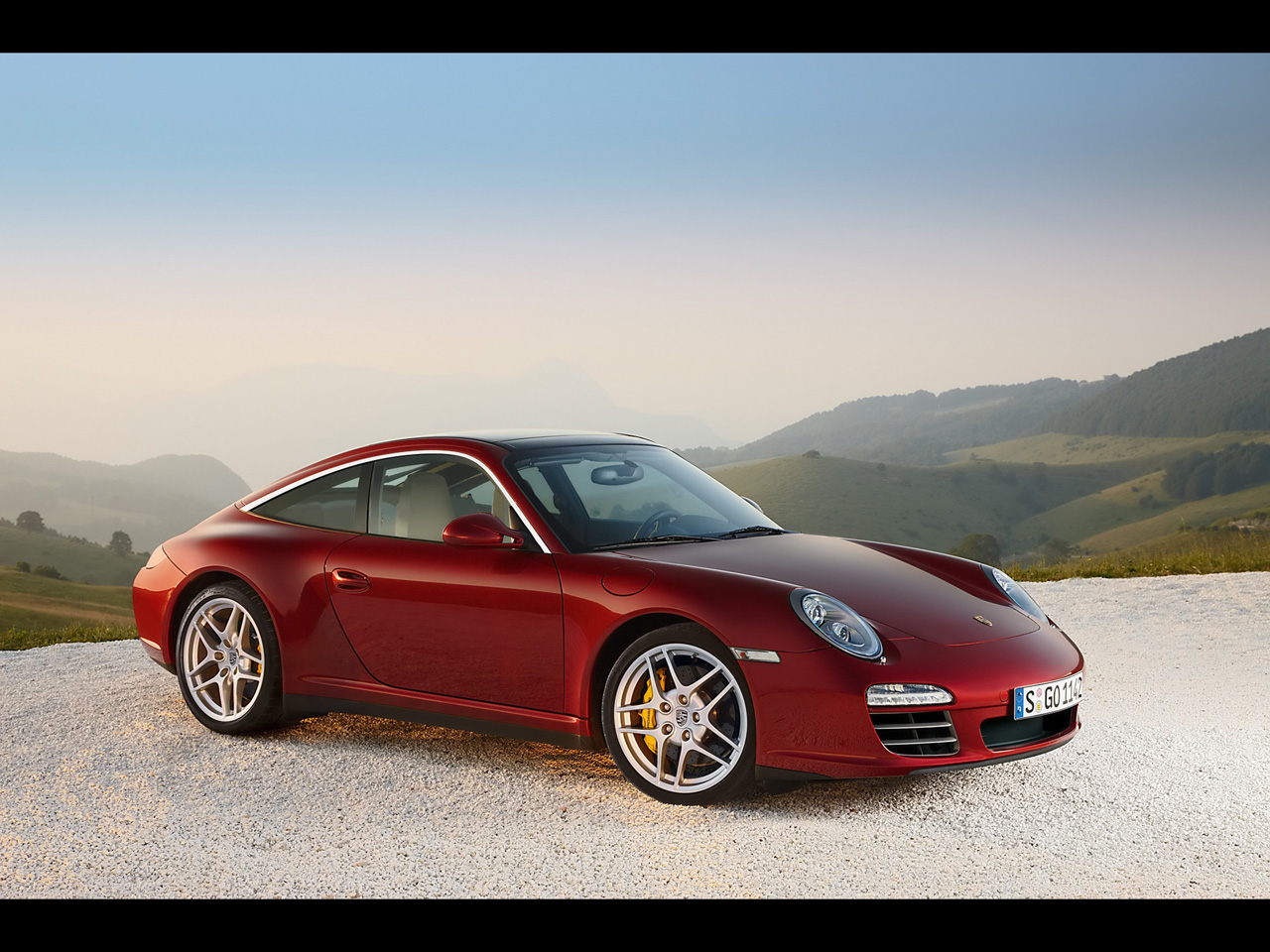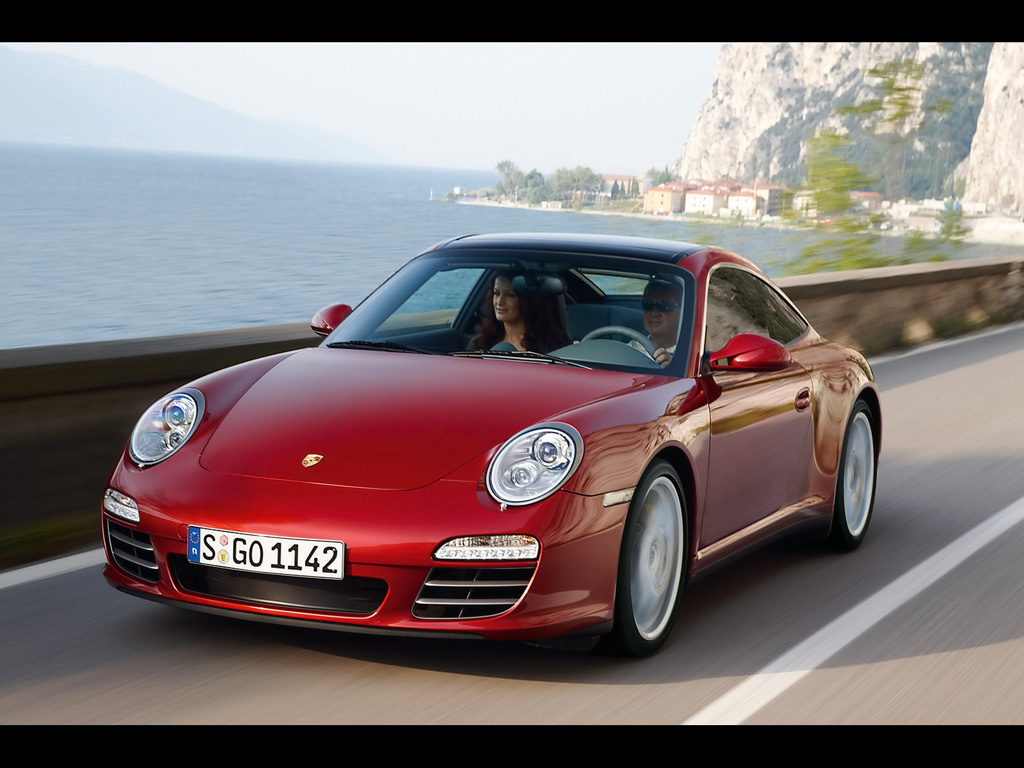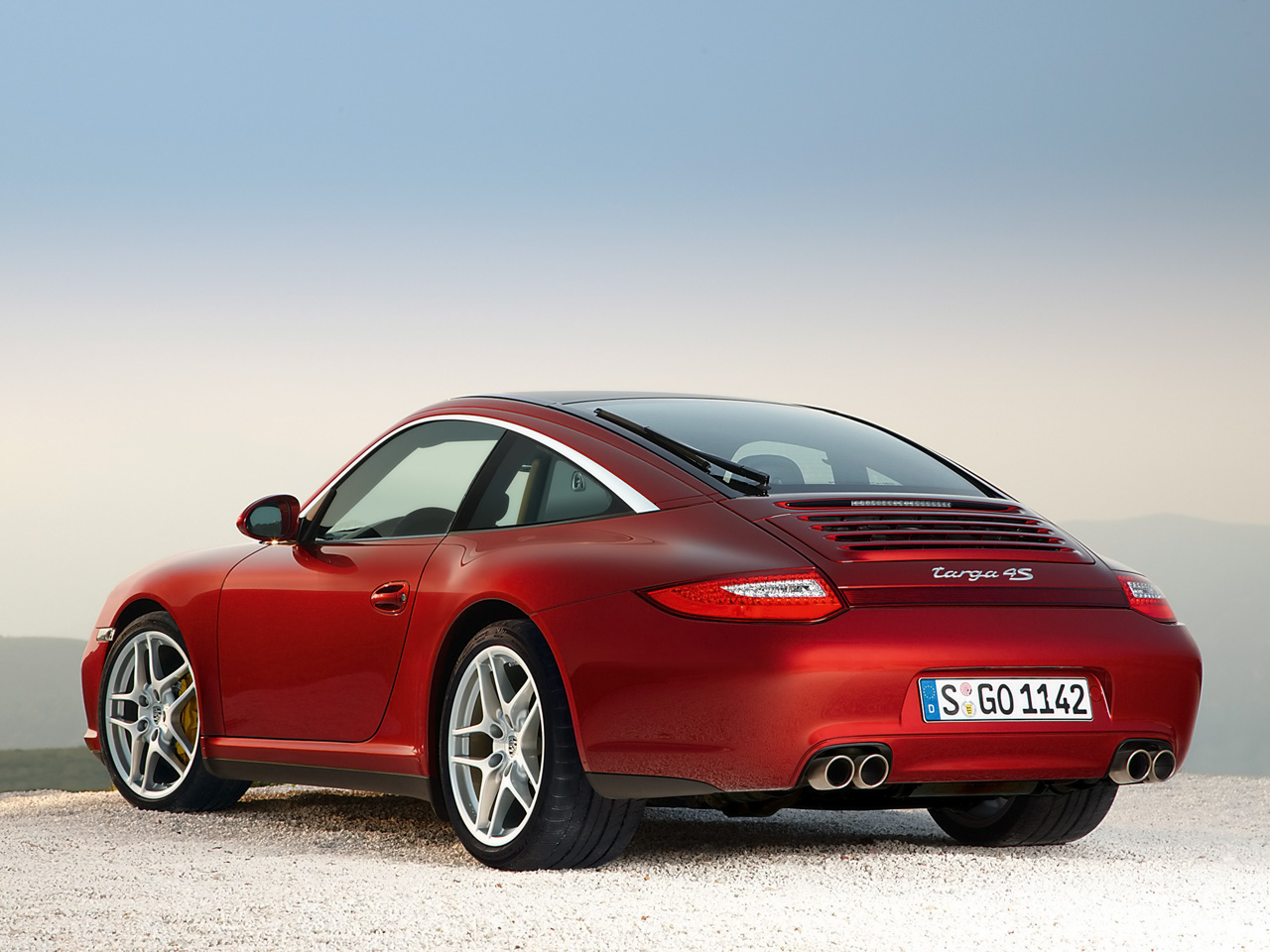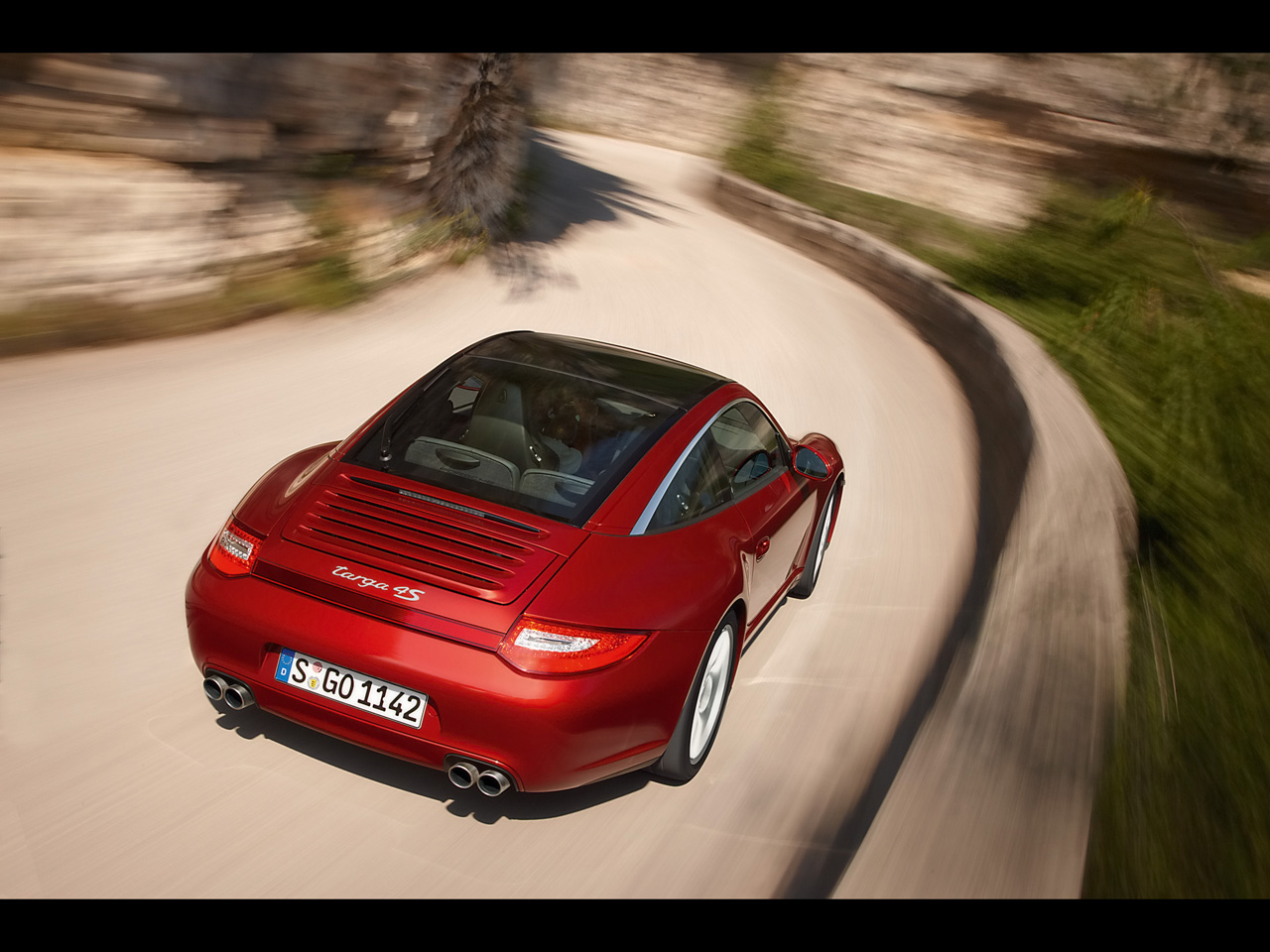2009 Porsche 911 Targa 4 and Targa 4S
|
Price |
-- |
Production |
-- | ||
|
Engine |
3.6 & 3.8 liter flat-6 |
Weight |
-- | ||
|
Aspiration |
natural |
Torque |
-- | ||
|
HP |
345 & 385 hp |
HP/Weight |
-- | ||
|
HP/Liter |
95.8 & 101.3 hp per liter |
1/4 mile |
-- | ||
|
0-62 mph |
5 & 4.7 seconds |
Top Speed |
176 & 184 mph |
(from Porsche Press
Release) New Porsche 911 with Glass Roof and Tailgate coming in
Autumn
Stuttgart. Introducing the new 911 Targa, Dr. Ing. h.c. F.
Porsche AG, Stuttgart, is completing the fastest generation change
the world has ever seen in the 911 model series: Two new power units
with direct fuel injection improve both performance and the economy
of the new model, the fast-shifting PDK
Porsche-Doppelkupplungsgetriebe or double-clutch gearbox replaces
the optional Tiptronic S automatic transmission, and electronically
controlled PTM Porsche Traction Management takes the place of the
former all-wheel drive.
The latest model series in the new generation of the 911 comes as
before in two variants, as the 911 Targa 4 and the 911 Targa 4S. The
“basic“ version is now powered by a 3.6-litre flat-six developing
maximum output of 345 bhp (254 kW) and giving the car a top speed of
284 km/h or 176 mph. The power unit featured in the 911 Targa 4S
displaces 3.8 litres, developing maximum output of 385 bhp (283 kW)
and accelerating this outstanding sports car to a top speed of 297
km/h or 184 mph.
The visual highlight of the 911 Targa, as before, is the
1.54-square-metre glass roof made up of two segments, the elegant
sliding roof at the front and the practical tailgate. When opened
completely, the roof slides within seven seconds beneath the
tailgate, offering an open space above the passenger compartment of
0.45 square metres. The sliding roof comes as standard with a new
sunblind offering even greater privacy than before and, when closed,
covering the entire area of the sliding roof and opening and closing
electrically independently of the roof itself. The glass roof and
the tailgate come in special anti-sunglare glass, protecting the
occupants even in bright sunshine from UV radiation and excessive
heat.
With the launch of the new Carrera, Porsche is introducing direct
fuel injection also in the company’s range of sports cars. The
advantages are an increase in engine power by up to 8.5 per cent, a
reduction in fuel consumption by 11.2 per cent, and a decrease in
CO2 emissions by 13.6 per cent, depending on the respective model
and its features.
Introducing the new Doppelkupplungsgetriebe or double-clutch gearbox
featuring no less than seven gears, Porsche now offers a very
interesting option as an alternative to the manual six-speed
gearbox. PDK is replacing the former Tiptronic S transmission and
excels in particular through its unparalleled speed in shifting
gears, combined with superior fuel economy all round.
Featuring this outstanding transmission, the new Targa leaves hardly
anything to be desired in terms of dynamic driving pleasure: The 911
Targa 4 accelerates to 100 km/h in 5.2 seconds and the even more
powerful S-model completes the same exercise in 4.9 seconds – in
each case with the manual six-speed gearbox. The optional
Porsche-Doppelkupplungsgetriebe shifts gears even faster to set an
even higher standard, the 3.6-litre Targa 4 with PDK accelerating to
100 km/h in exactly 5.0 seconds, the Targa 4S offering an even
faster and more dynamic 4.7 seconds.
Yet another change in technology comes on the car’s all-wheel drive:
In the new 911 Targa electronically controlled PTM Porsche Traction
Management replaces the former all-wheel drive with its viscous
multiple-plate clutch. This superior system combines the driving
pleasure so typical of a Porsche thanks to the engine at the rear
and rear-wheel drive as the primary concept with an even higher
standard of driving stability, traction, and agile handling. To
ensure this supreme class at all times, PTM feeds exactly the right
share of engine power and traction additionally to the front wheels
in every driving situation through an electronically controlled
multiple-plate clutch. And as on all new Carrera 4 models, a
mechanical rear axle differential featured as standard gives the car
even greater driving dynamics.



